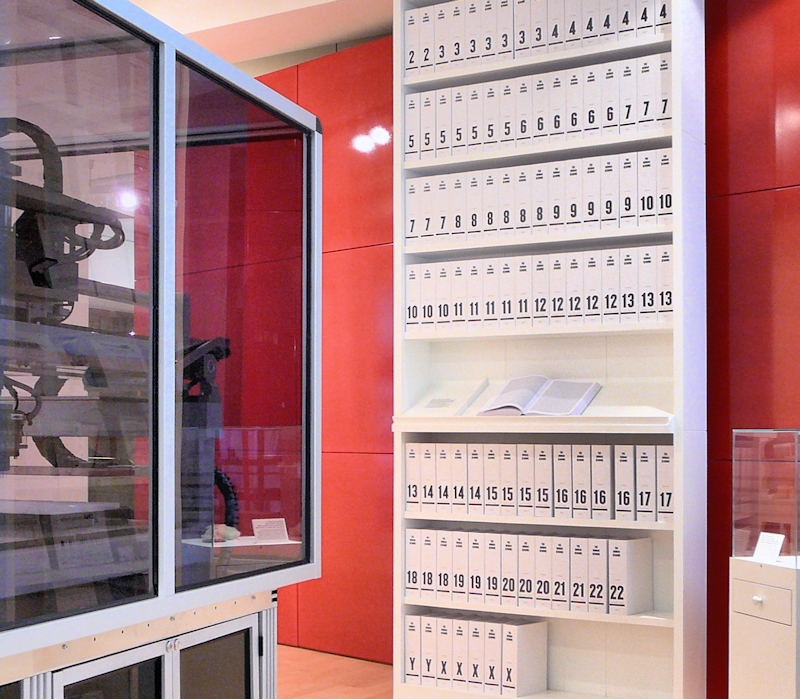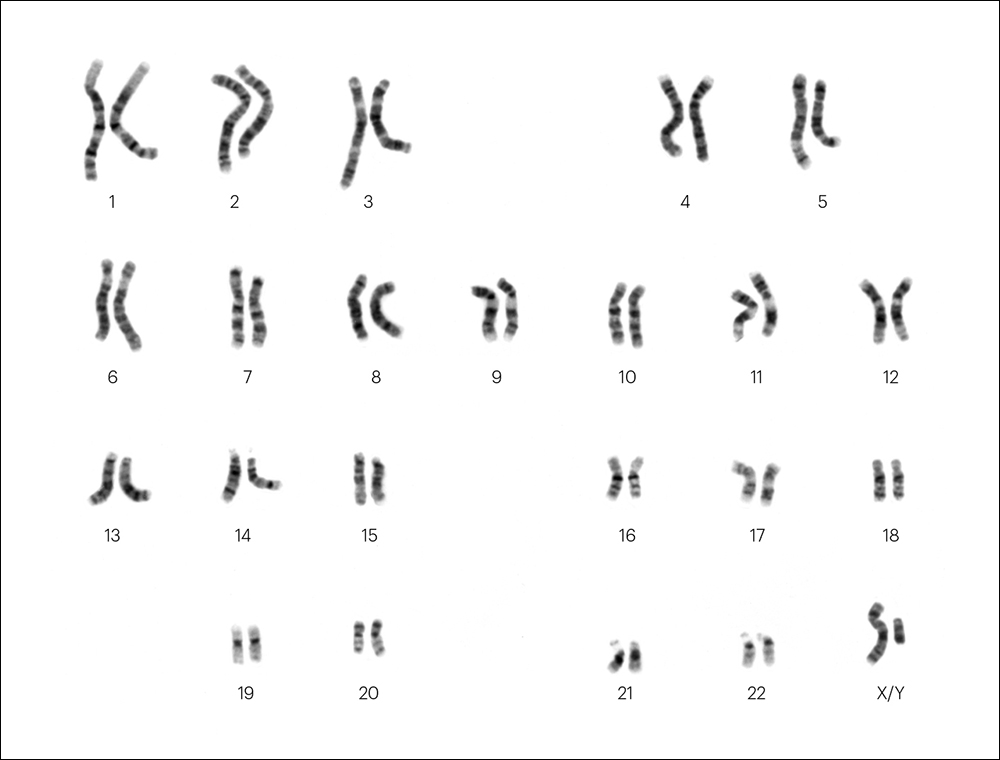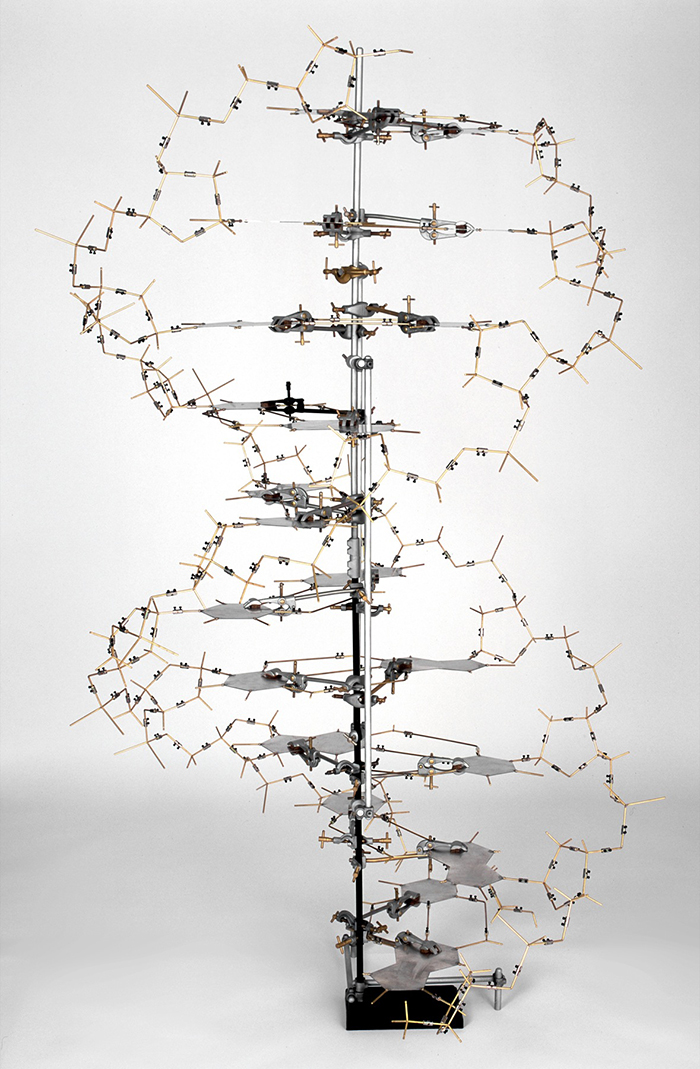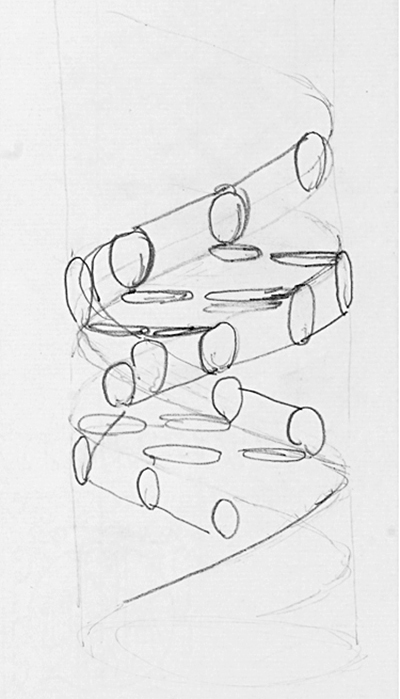PRINTING THE GENOME, AND THE DOUBLE HELIX STORAGE SOLUTION.

The Wellcome genome bookcase 118 books, each a thousand pages long, contain the 3.4 billion letters of DNA code that make up the human genome, displayed in a type size of 4.5 pts. The bookcase is part of the Welcome Collection in London.

Photograph by Russ London.
The books are numbered for the 22 pairs of chromosomes, plus X and Y. Below, the male karotype.

National Human Genome Research Institute.
Ultimate storage Our DNA carries all this information with an incredible degree of compactness. As a result, researchers are developing techniques to use DNA to store data. A single gram could potentially hold 215 million gigabytes. The artificially created strands can be read by sequencing machines. Another big plus is that DNA has the potential to last for hundreds of thousands of years, if stored correctly.
Below, the first published illustration of the double helix (in “Nature,” 1953), illustrated by Odile Crick. She was married to Francis Crick, who discovered the structure of the DNA molecule with James Watson.

A more developed version from “Nature” in 1968.

A replica of Crick and Watson’s original DNA model.

MRC Laboratory of Molecular Biology.
Crick’s original drawing.

Data storage footnote Back in the early 1980s, 10 megabyte storage was really something (and really expensive).
That’s about $10,000 in today’s dollars.

This computer from the late 1970s cost $24,000 (adjusted for inflation).

